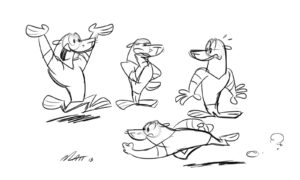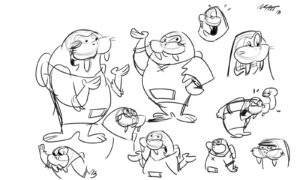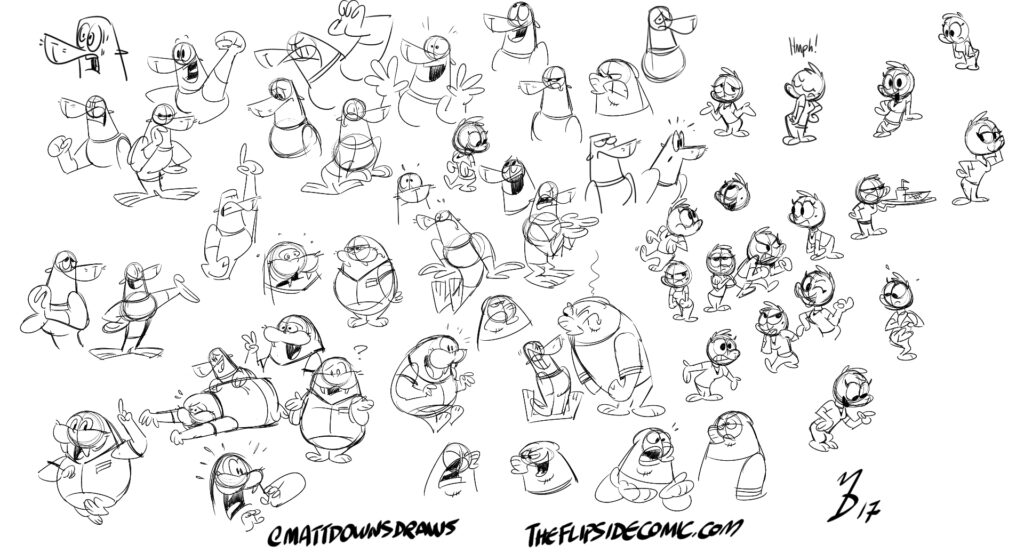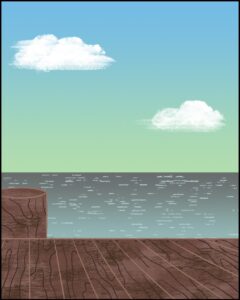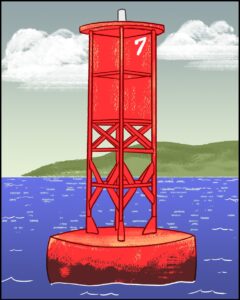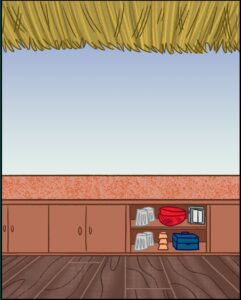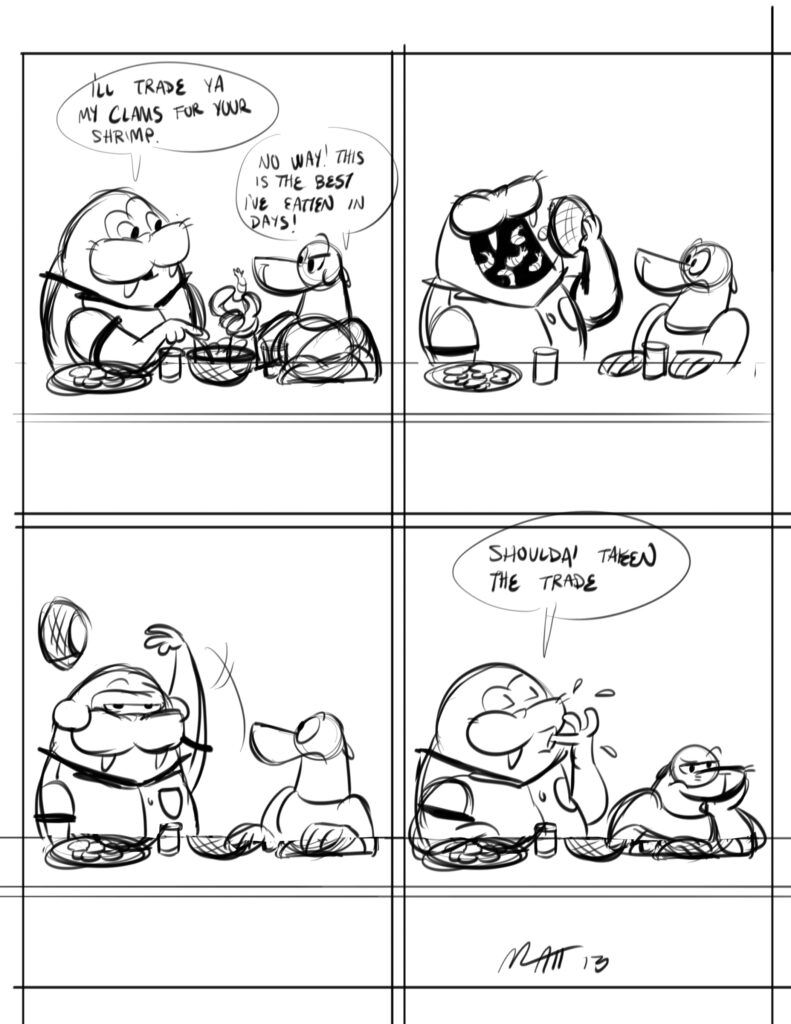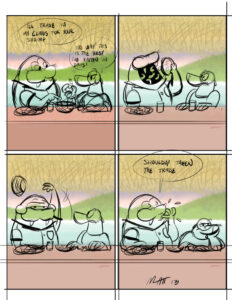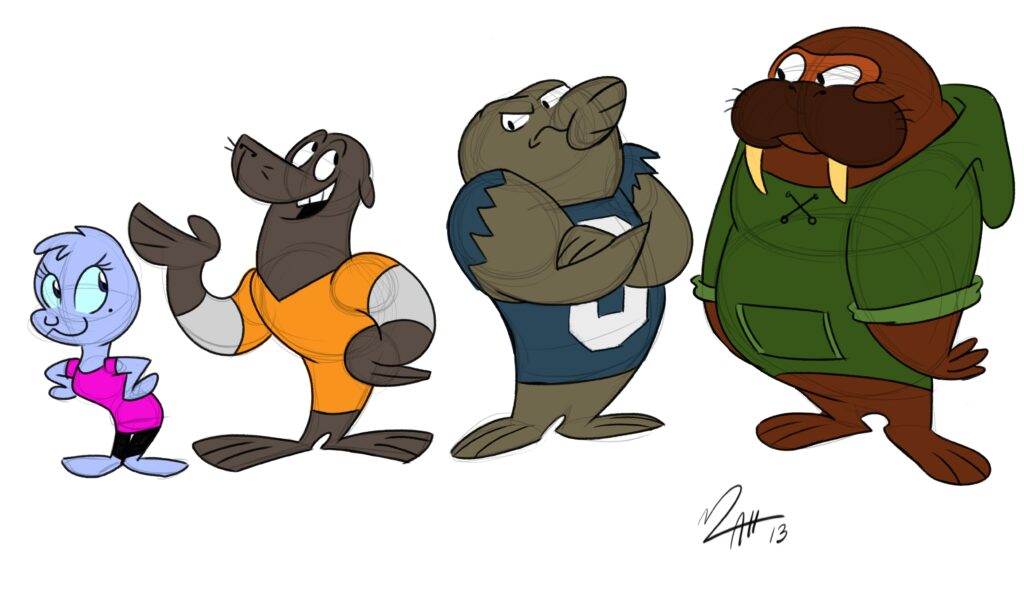 Original character designs from 2013 |
When starting a story, obviously one of the first steps was developing the cast. Character personalities are very important because the cast has to compliment or clash with one another in order to create conflict.Utilizing a variety of simple shapes can come together to build identifiable characteristic postures for each cast member. |
- Murphy’s personality sketches
- Murphy’s personality sketches
- Wyatt’s personality sketches
Once I have the characters and their chemistry figured out, the next step is fleshing out their personalities. Murphy, being the main protagonist of the comic, would be the one that gets most of the attention. Since he’s a unique looking animal, I had to figure out how his long arms and small legs would translate into an anthropomorphic character. Wyatt, another character who would be reoccurring in the comic, has the polar opposite body type compared to Murphy’s slick and fit build. These two would be doing the majority of the moving and acting in the comic, so getting these two into a variety of poses was crucial.
- Facial expression exploration for Murphy, Wyatt, Trent and Valerie
- Murphy facial expressions for #206
Some jokes that I come up with are inspired just from a single random doodle of a funny pose or face. The challenging yet fun part is developing a joke around that drawing.
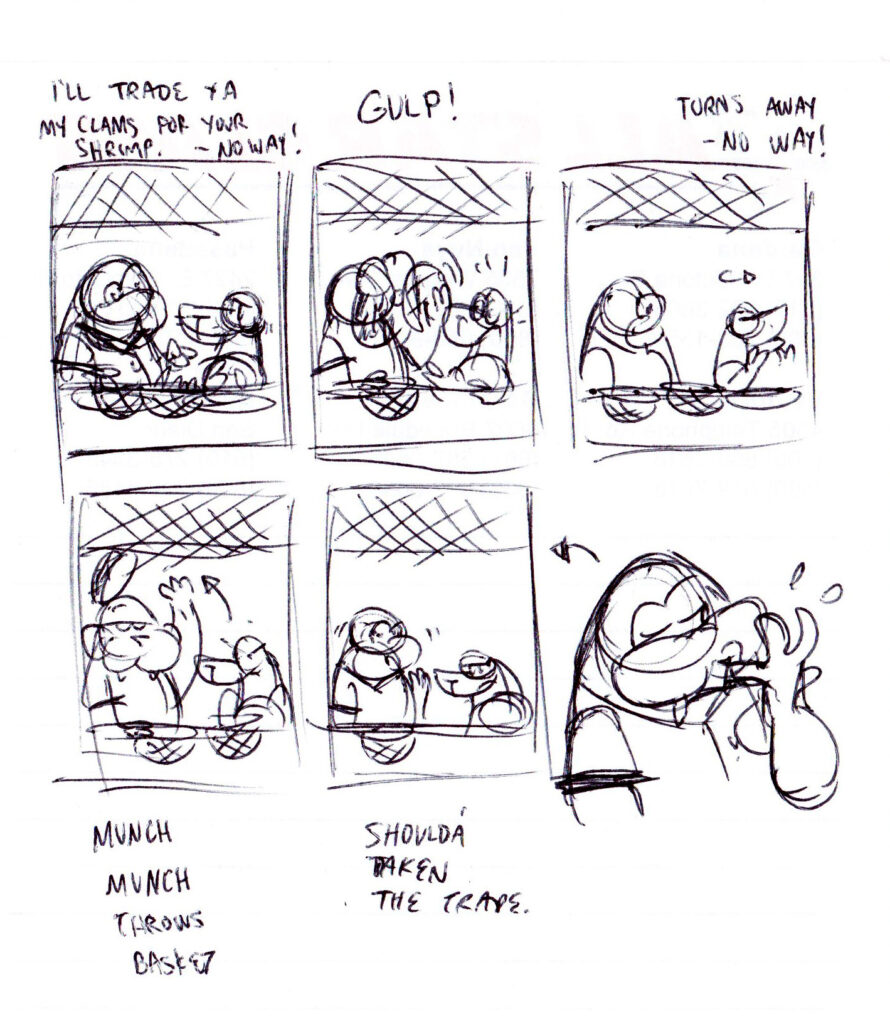 Thumbnail doodles of comic #35 |
BRAINSTORMING & THUMBNAIL SKETCHWhen I think up a joke, situation, or just a quippy remark, I usually have some sort of notebook, or sketchbook in reach to write it down. Even if it’s a scrap of paper, I get the idea or words down as soon and as fast as possible, that way I can mold or rework the structure of the joke. If it makes me crack a smile or muster up a chuckle, it’s a keeper. This is when I figure out the dialogue layout, and setup that leads up to the punchline. This is also when I figure out the right facial expressions. |
BACKGROUNDSI have a variety of backgrounds that I designed ahead of time for future comics. (The grill, the pier, the dock, the beach, a sidewalk, a park bench, a hallway etc.) It’s a simple task of setting it in place in the panel and drawing the characters on top. |
|
|
SKETCHWhen I’m happy with the gag, I dive in and do a loose draft in Photoshop, or ClipStudio. This is when I nail down the final poses and facial expressions. I have my background on a bottom layer so I can sketch the characters on top interacting with it. I also loosely write in the dialogue as a space saver. |
|
|
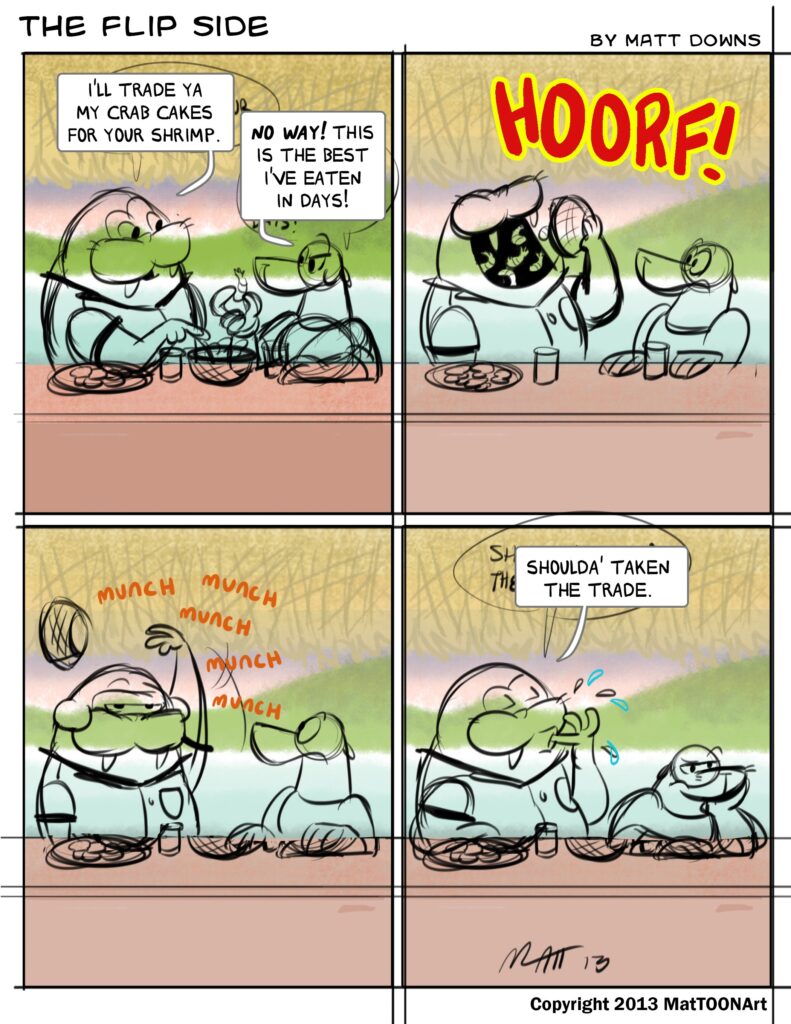 |
DIALOGUEI have a custom made font of my own handwriting that I use for my comics. Part of the charm of comic strips reading the comic in the creator’s own trademark and personal lettering. When I do sound effects, I usually just write in the sound using a different brush texture depending on what’s being projected. |
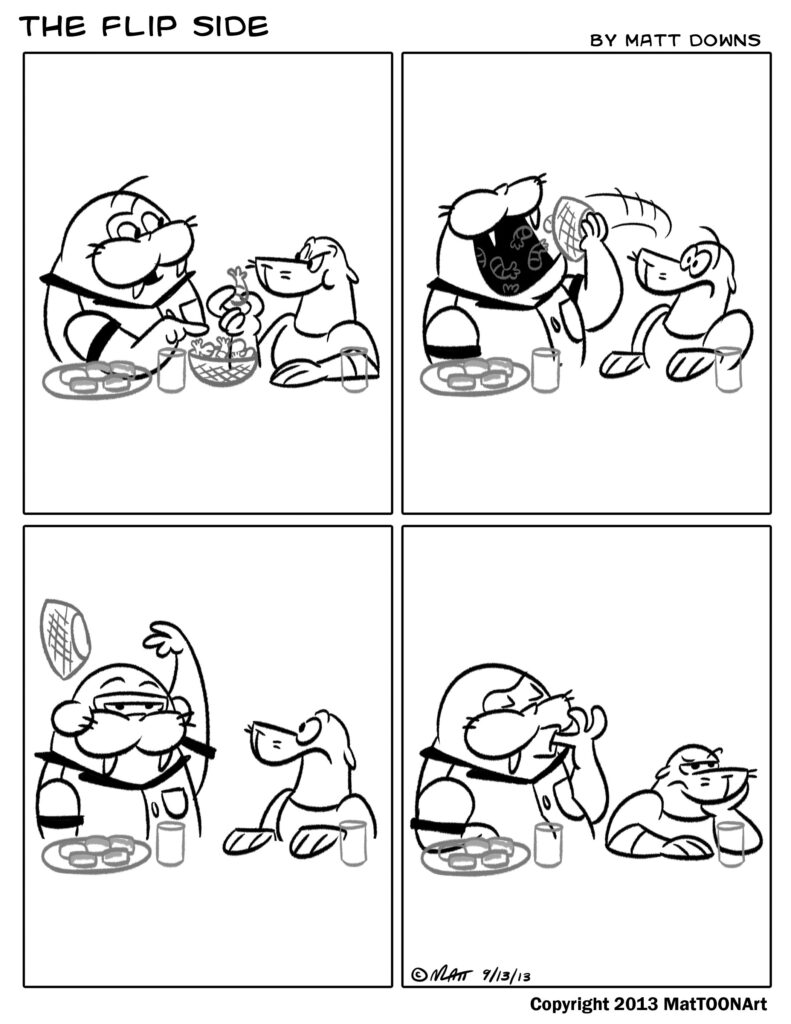
|
INKINGI used ClipStudio to specifically ink in when I first started the comic, but I’ve created a type of charcoal brush that I use in Photoshop now. (Ask any cartoonist, it’s one of their favorite steps!) |
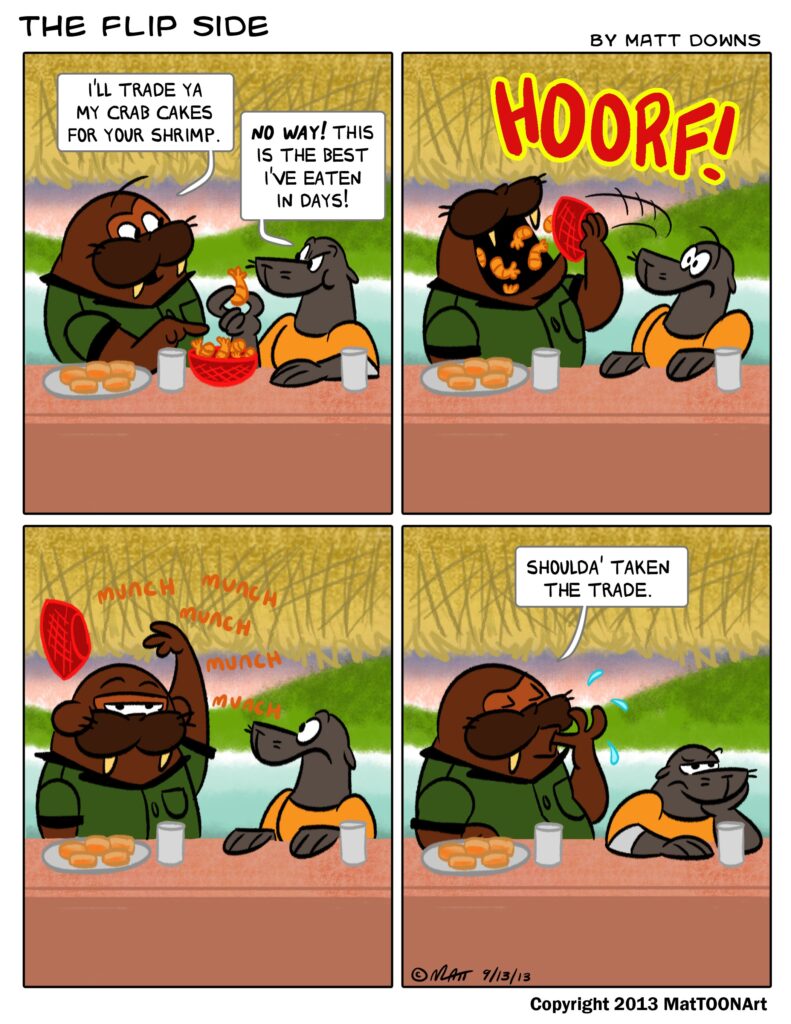
|
COLORColoring is usually the longest part of the comic making process for me. This is primarily done in Photoshop. Only the props have colored outlines so that both them and the characters stand out from one another. |

